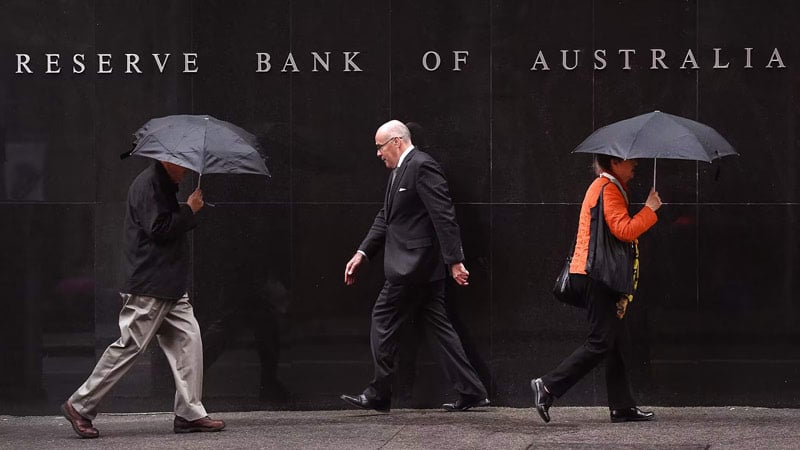[ad_1]
A cash rate forecast update from ANZ Bank has reverberated through the banking and finance and property industries this week.
The Reserve Bank has also publicly stated the official interest rate is still probably well below where it needs to be.
More will be known following next week’s June quarter inflation figures, followed closely by the RBA’s regular monthly meeting on the first Tuesday in August.
Despite the RBA’s view that Australian households are well-placed to manage further rate hikes, what would the ramifications be if the upwards revision to ANZ’s cash rate forecast proves correct?
Long story short, it would spell more bad news for the trajectory of housing values.
Since the first rate hike in May, the downwards trend in value growth has steepened, with the rate of decline accelerating across Sydney and Melbourne.
- Interestingly Brisbane, which was previously enjoying a run of high quarterly growth in housing values, has abruptly joined the declining trend with the rolling four-week change in dwelling values turning negative through the first week of July, according to CoreLogic’s daily hedonic home value index.
- Since peaking, Sydney housing values are down -4.4%, with most of the decline (-3.8%) occurring since the May 5 rate hike.
- Similarly, in Melbourne, housing values are down -2.6% since then, comprising the bulk of a peak to the current decline of -2.8%.
Growth in housing values is broadly slowing around the country, and it is likely more regions will succumb to negative movements over the coming months.
CoreLogic’s data released this week showed of the 3,085 house and unit markets analysed in the June quarter, 41.9% had declined in value.
It’s double the proportion that recorded negative rates of growth in Quarter 1.
For perspective at the height of the 2017-2019 downturn, almost 81% of house and unit markets were recording a quarterly decline in value.
In the early phase of COVID, housing markets went through a broad-based but short-lived decline when 67% of markets fell.
During the peak of the pandemic growth cycle in early to mid-2021, only 3.2% of markets were recording a decline in value.
Household debt at record highs
With household debt at record highs and most of that debt held in housing assets, the household sector is highly sensitive to the rising cost of debt.
Add to this the extremely high prices for non-discretionary goods such as food and fuel, and it’s clear that household balance sheets are likely to be more challenged as mortgage rates increase.
Labour market conditions remain tight
While labour market conditions remain tight, there isn’t a great deal of concern that households will fall behind on their debt repayment schedules, however, it is likely that households will be pulling back in other areas of their expenditure to ensure they can fund essential purchases as well keep up to date on their debt servicing obligations.
Sizeable repayment buffers, which the RBA recently estimated to be around 21 months for variable mortgage rate borrowers, should also help to cushion distress across the mortgage sector.
Consumer sentiment continued to trend sharply lower in June
With the monthly Westpac-Melbourne Institute index falling another -3%, the sentiment index is down nearly -20% since December and has fallen every month through 2022.
Westpac notes the pace of decline is comparable to previous shocks historically.
With an index value of 83.8 (noting anything below 100 indicates pessimists outweigh optimists), the sentiment reading has only been this low historically through periods of major disruption (pandemic, GFC, 90’s recession and 80’s recession).
The decline is mostly being driven by concerns around inflation, and to a lesser extent higher interest rates, but housing sentiment readings have also declined, especially in NSW and Victoria.
Clearly, consumers are very sensitive to cost pressures, implying a fragile household sector and likely points towards a broader pullback in consumption and housing market activity until sentiment starts to improve.
Overseas arrivals and departure data shows ongoing ‘normalisation’
Overseas arrivals and departures data for June shows an ongoing ‘normalisation’ in international movements for both arrivals and departures.
Both measures are now tracking at around half of their pre-pandemic levels, but trending higher.
The return of migration back to Australia is likely to flow into additional rental demand – boosting demand in what is already an extremely tight rental market.
We should also see a gradual boost to tourism sectors as overseas visitors pick up, although there may be some downside impact as Australians embark on overseas holidays rather than the domestic-oriented travel we have seen through the second half of the pandemic.
Tim heads up the Core Logic RP Data research and analytics team, analysing real estate markets, demographics and economic trends across Australia. Visit www.corelogic.com.au
[ad_2]
Source link



